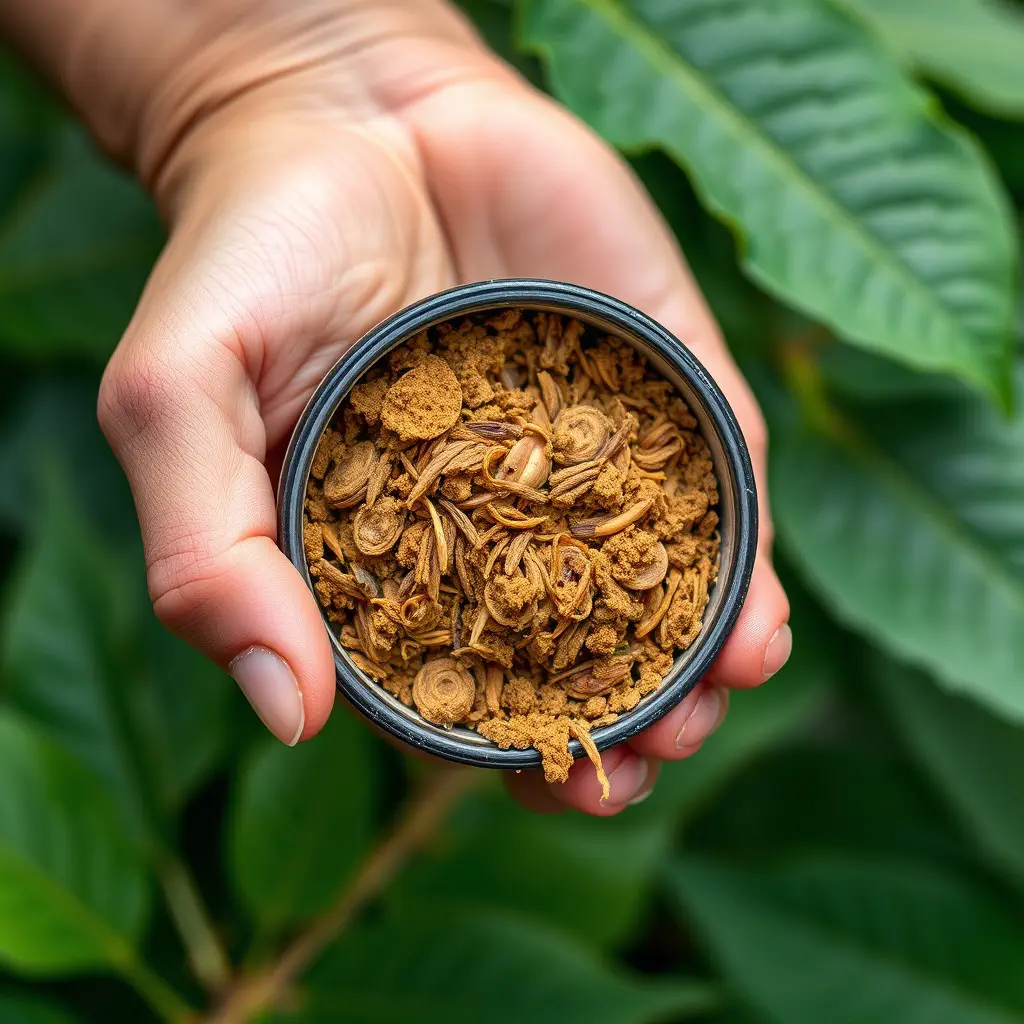Kratom, a plant from Southeast Asia with stimulant and sedative properties, is gaining attention among athletes for its potential to promote restful sleep, aiding muscle repair and recovery after intense training. The active compounds mitragynine and 7-hydroxymitragynine interact with opioid receptors to induce relaxation, alleviating muscle tension and mental stress, which may enhance the quality of sleep. Studies suggest that kratom can positively affect sleep architecture, potentially improving overall sleep quality. It's also recognized for its analgesic effects, helping address pain and anxiety issues that can disrupt restful sleep. However, users must exercise caution due to potential side effects and varying legal statuses. It is crucial to consider dosage, strain selection, and personal responses when using kratom as part of a wellness routine for sleep and recovery. For safe and effective use, individuals should consult healthcare professionals before integrating kratom into their regimen, ensuring it aligns with their specific health needs and complements good sleep hygiene practices. Kratom strains like Bali or Indo are often recommended for their calming effects when taken before bed to support restful sleep for enhanced athletic performance and overall well-being.
Kratom, a botanical extract from the Mitragyna speciosa tree, has garnered attention in fitness circles for its potential benefits in post-training recovery. This article explores the multifaceted role of kratom in facilitating restful sleep and easing muscle relaxation and pain—key components in the recovery process for athletes. We’ll delve into how kratom can be strategically integrated into a recovery routine, offering insights into optimizing its effects for enhanced athletic performance and overall well-being. Discover the science behind kratom for restful sleep and its impact on muscle relaxation and pain alleviation, alongside practical tips for crafting an effective kratom recovery regimen tailored to your unique needs.
- Unlocking the Potential of Kratom for Restful Sleep: A Deep Dive into Training Recovery
- Understanding Kratom's Role in Enhancing Muscle Relaxation and Pain Alleviation for Athletes
- Crafting Your Kratom Routine: Best Practices for Incorporating Kratom into Your Post-Training Recovery Regimen
Unlocking the Potential of Kratom for Restful Sleep: A Deep Dive into Training Recovery

Kratom, a tropical tree native to Southeast Asia, has been traditionally used for its stimulant and sedative properties. Within the realm of training recovery, the potential benefits of kratom for restful sleep are gaining attention among athletes and fitness enthusiasts. The alkaloids present in kratom leaves, such as mitragynine and 7-hydroxymitragynine, interact with the body’s opioid receptors, which can aid in the relaxation of muscles and the mind. This interaction may facilitate a more profound state of relaxation, allowing for restful sleep that is critical for muscle repair, tissue growth, and overall recovery after intense training sessions.
Research suggests that kratom may influence various aspects of sleep architecture, potentially enhancing the quality of sleep. Users report that specific strains of kratom can alleviate discomfort and anxiety, which often disrupt restful sleep patterns. By promoting a calm and tranquil state conducive to sleep, kratom can be a valuable tool for those seeking to optimize their recovery process. However, it is crucial to approach the use of kratom with caution due to its potential side effects and legal status in various regions. Users should consider dosage, strain selection, and individual sensitivities when incorporating kratom into their wellness routine for restful sleep and training recovery. It is also advisable to consult healthcare professionals before integrating kratom into any health regimen to ensure safety and efficacy.
Understanding Kratom's Role in Enhancing Muscle Relaxation and Pain Alleviation for Athletes

Kratom, a plant originating from Southeast Asia, has garnered attention within athletic communities for its potential benefits in enhancing muscle relaxation and alleviating pain. The primary active compounds in kratom, mitragynine and 7-hydroxymitragynine, interact with the body’s opioid receptors, which can lead to analgesic effects. For athletes recovering from intense training or those experiencing muscle soreness, kratom may offer a natural alternative to pharmaceutical pain relief options. Its action can help in soothing sore muscles, allowing for improved comfort and mobility during the recovery process. Moreover, certain strains of kratom are known for their sedative properties, which can aid in achieving a restful sleep. Adequate rest is crucial for muscle repair and overall physical recovery; thus, kratom for restful sleep can be beneficial for athletes looking to optimize their recovery between training sessions. It’s important to use kratom responsibly and in accordance with local regulations, as dosage and strain selection can significantly influence its effects. Athletes considering kratom should consult with healthcare professionals to ensure it aligns with their health goals and does not interfere with other medications or supplements they may be taking. By integrating kratom into a well-structured recovery protocol that includes proper nutrition, hydration, and rest, athletes can potentially enhance their training and performance outcomes.
Crafting Your Kratom Routine: Best Practices for Incorporating Kratom into Your Post-Training Recovery Regimen

Crafting an effective recovery regimen post-training is crucial for athletes and fitness enthusiasts who seek to optimize their performance and overall well-being. Incorporating kratom into this routine can be a beneficial strategy, particularly when it comes to promoting restful sleep. Kratom, derived from the leaves of the Mitragyna speciosa tree, has been traditionally used for its potential sedative properties, which can aid in achieving a deeper and more restorative night’s sleep. When selecting a kratom strain for sleep, opt for those that are known for their relaxing effects, such as Bali or Indo strains. It’s important to start with a low dose to assess your tolerance, as individual sensitivities can vary. For best practices, consume kratom capsules or powder about 30-60 minutes before your intended sleep time to allow the compounds to take effect. To ensure a consistent and controlled experience, consider using kratom in combination with established sleep hygiene practices, such as maintaining a regular sleep schedule, creating a restful environment, and avoiding stimulating activities before bedtime. Additionally, it’s advisable to consult with a healthcare provider before integrating kratom into your recovery regimen, especially if you have pre-existing health conditions or are taking other medications. By carefully tailoring your kratom use to complement your training recovery needs and promoting restful sleep, you can enhance your body’s natural repair mechanisms, leading to improved athletic performance and overall health.
Kratom has emerged as a multifaceted tool for athletes seeking to enhance their training recovery, particularly through its effects on restful sleep and muscle relaxation. By exploring the potential of kratom in promoting sleep quality and alleviating post-exercise pain, individuals can tailor their recovery strategies effectively. The best practices outlined for integrating kratom into a post-training routine underscore its role as a supportive element in an athlete’s recovery process. For those considering kratom as part of their wellness regimen, it is crucial to approach its use with careful consideration and adherence to safety guidelines, ensuring that it complements rather than compromises overall health and performance. As research continues to evolve, the understanding and utilization of kratom for restful sleep and recovery will likely expand, offering promising avenues for athletes to optimize their training recovery.






